Protein in 4 Oz Beef Burger
Where's the beef? Here, in many U.S diets. The average American male eats 4.8 ounces of meat each and every day, while the typical American female consumes 3.1 ounces per day, according to the National American Meat Institute. Per the latest Dietary Guidelines for Americans, we should consume 26 ounces of meat each week as part of a healthy 2,000-calorie diet, which works out to 3.7 ounces of meat per day.
It's important to remember, though, that your personal protein needs can vary. A lot.
"Weight and activity level play a big role in your protein requirements," says Rania Batayneh, MPH, owner of Essential Nutrition For You and author of The One One One Diet. "A very active person with a large muscle mass requires more protein per day than a relatively sedentary person. As a starting point, the dietary reference intake—the amount required to prevent deficiency—equates to 56 grams of protein per day for the average sedentary man and 46 grams of protein per day for the average sedentary woman."
It's also important to remember, though, that not all protein needs to come from animal sources. While animal foods are a good source of protein, there are many vegetarian protein sources that are high in protein. In fact, it's best if you mix things up. Especially if you struggle with controlling your cholesterol since animal foods are the only ones that contain it. (P.S. If you fall into that camp, this high-cholesterol diet plan might help.)
"Balance is very important when it comes to our diet, so should consider enjoying a meal that contains plant-based proteins like beans or nuts, daily or at least a few times per week. You'll get a boost of fiber and antioxidants, and eating too much of any food, including animal protein, can result in an increase in your caloric intake which may cause weight gain," Batayneh says.
Why is meat such a good source of protein?
All protein sources are built with a mix of amino acids, which are released into the bloodstream and used within the body after we eat them. They're mixed and matched into various proteins based on what your body needs at that moment, be it rebuilding muscle after a workout or creating antibodies to bolster your immune system, Batayneh says.
While 20 amino acids exist, nine are considered "essential," meaning we need to eat them to utilize them. (The other 11 the body can make.)
"Unlike most plant proteins, animal proteins are known to be 'complete,' which means they contain all essential amino acids needed for anabolic growth," says Rachel Fine, RD, a registered dietitian and owner of the nutrition counseling firm To The Pointe Nutrition in New York City.
Some plant proteins are lower in the amino acids methionine, lysine, and tryptophan, Batayneh says.
"By eating a variety of sources of protein—animal or plant—you can ensure you're eating enough protein and, by extension, getting all nine essential amino acids," she says.
Animal protein also tends to be higher in several micronutrients, including vitamin B12, vitamin D, omega-3 fatty acids, iron, and zinc.
How much meat is healthy to eat?
Stick to 3 to 4 ounces per day, on average, and aim to integrate some non-meat meals, too. When possible, stick to less processed meats (aka steering clear of deli meats, hot dogs, and bacon) to limit your consumption of sodium and other potentially inflammatory compounds.
What meat has the most protein?
Below, we list the 12 types of meat highest in protein to consider adding to your menu—ranked from highest to lowest protein content (in raw portions of the meat quantity listed). Some are more unique cuts, so if you struggle to find them at your local butcher or supermarket, you might have luck online at meat suppliers such as Market House, Snake River Farms, or FARMFOODS.
1. Turkey Breast
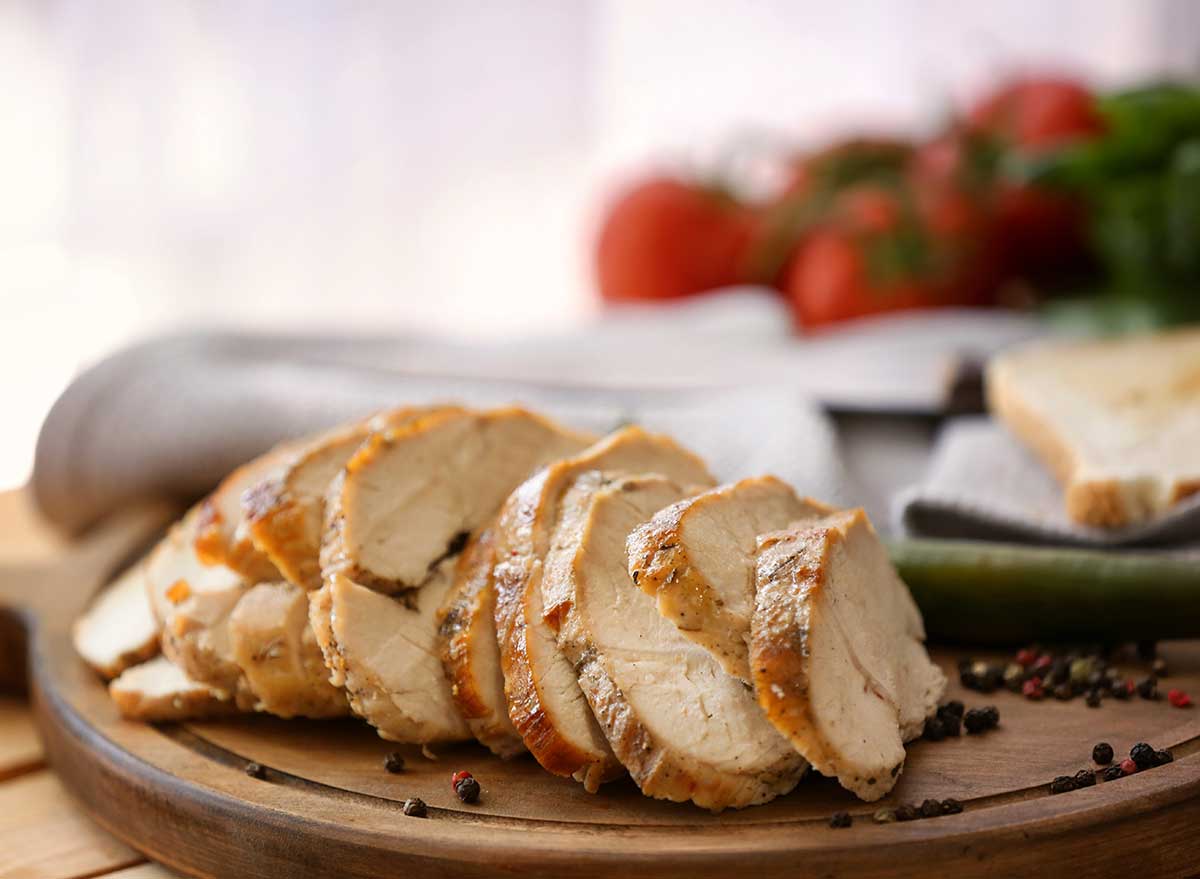
Protein, per 4 ounces: 26.7 grams
Don't reserve this poultry pick for Thanksgiving alone. Loaded with lean protein, turkey is one of the healthiest meats you can buy—and not just because it's a good source of protein. It's also because it's extremely low in fat—just 1.5 grams per 4 ounces—making it a good-for-you lean protein. Turkey can be the star of your sandwich, salad, or date night entree (just add veggies and a glass of wine—each).
2. Bison steak
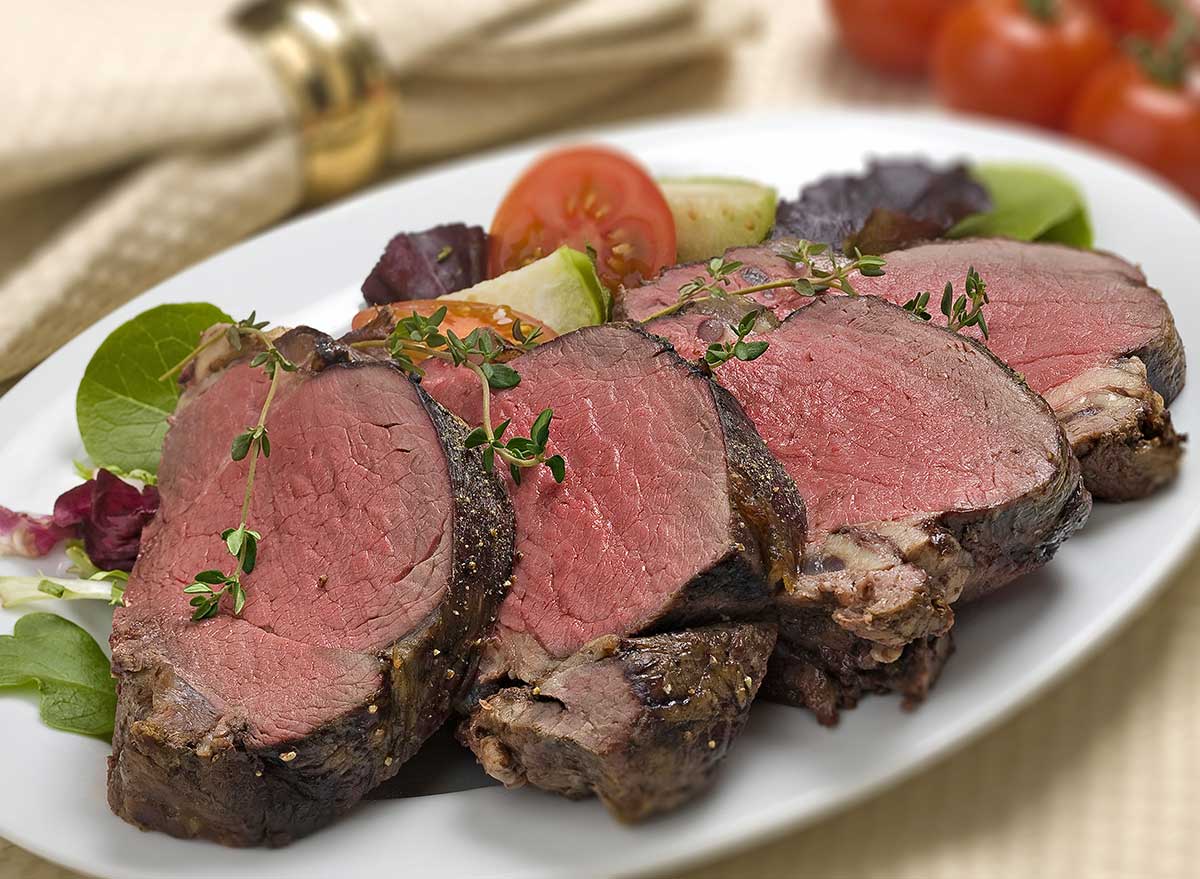
Protein, per 4 ounces: 26.4 grams
Lower in fat than beef, the typical bison steak has 25 percent fewer calories than its cow counterparts. It can be cooked and used in similar ways, however, so consider searing it in a cast-iron skillet or tossing it on the grill.
3. Elk steak
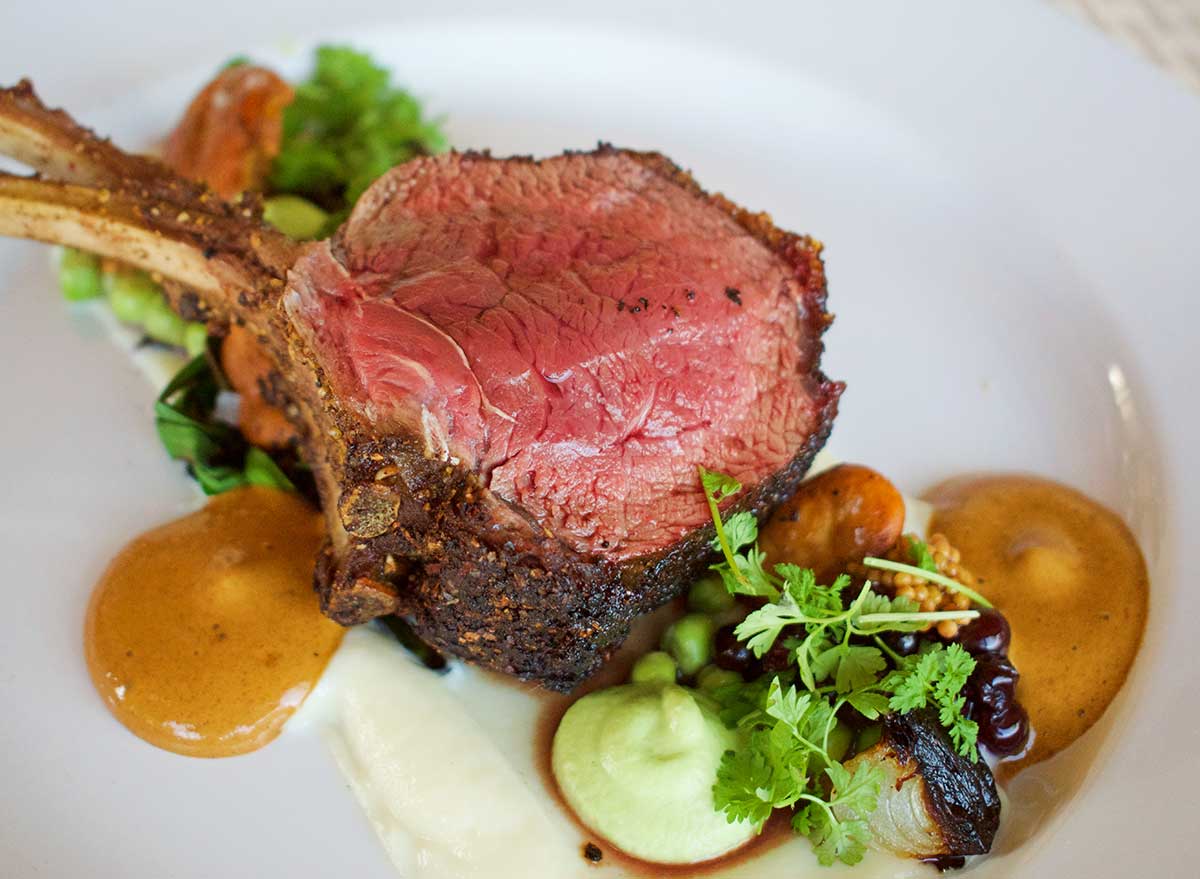
Protein, per 4 ounces: 26 grams
Elk steak has about half(!) as many calories as beef since it's much lower in fat. To keep it tender and juicy, aim to cook it for a slightly shorter time than your go-to beef steak. Try broiling it for 3 to 4 minutes per side.
4. Emu steak
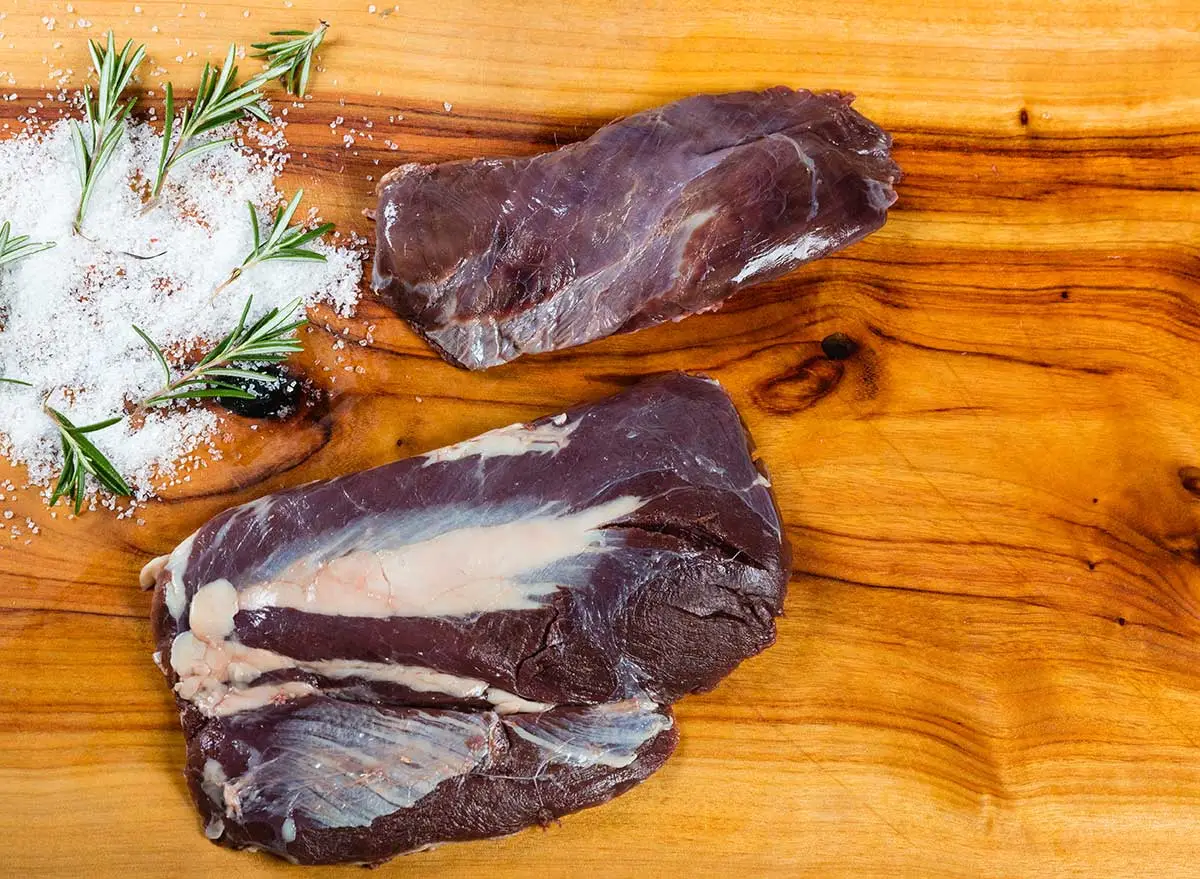
Protein, per 4 ounces: 25.3 grams
Slightly higher in protein, iron and vitamin C than beef, emu is a muscle-building star. Marinate for 12 to 24 hours to infuse each ounce with flavor, then grill for tasty results.
5. Beef steak
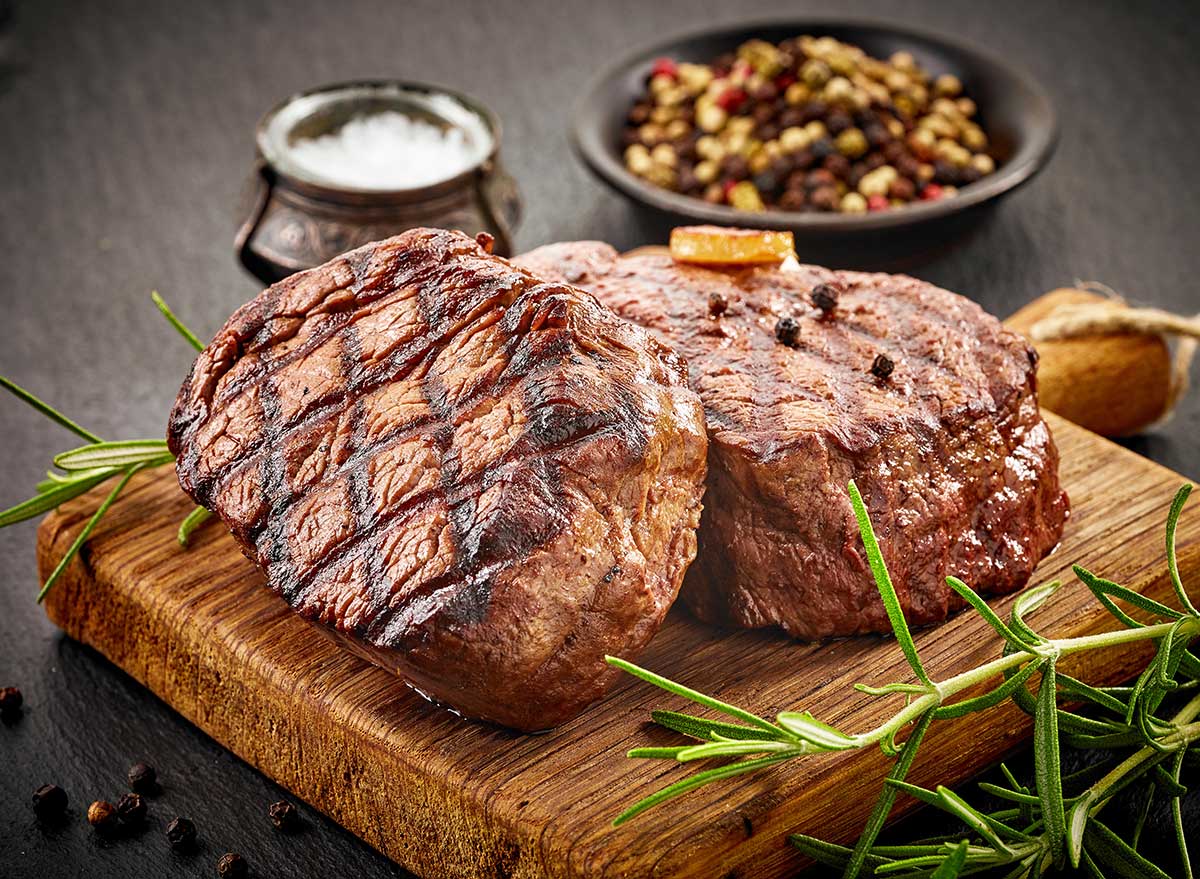
Protein, per 4 ounces: 25.1 grams
From filet to ribeye, there is a good amount of high-quality protein in beef. Lately, pro steak chefs are into the reverse sear (and we are too!). Roast in the oven until almost to your preferred level of doneness, then sear in a hot pan with a pat of butter to score a nice caramelized exterior.
6. Ostrich steak
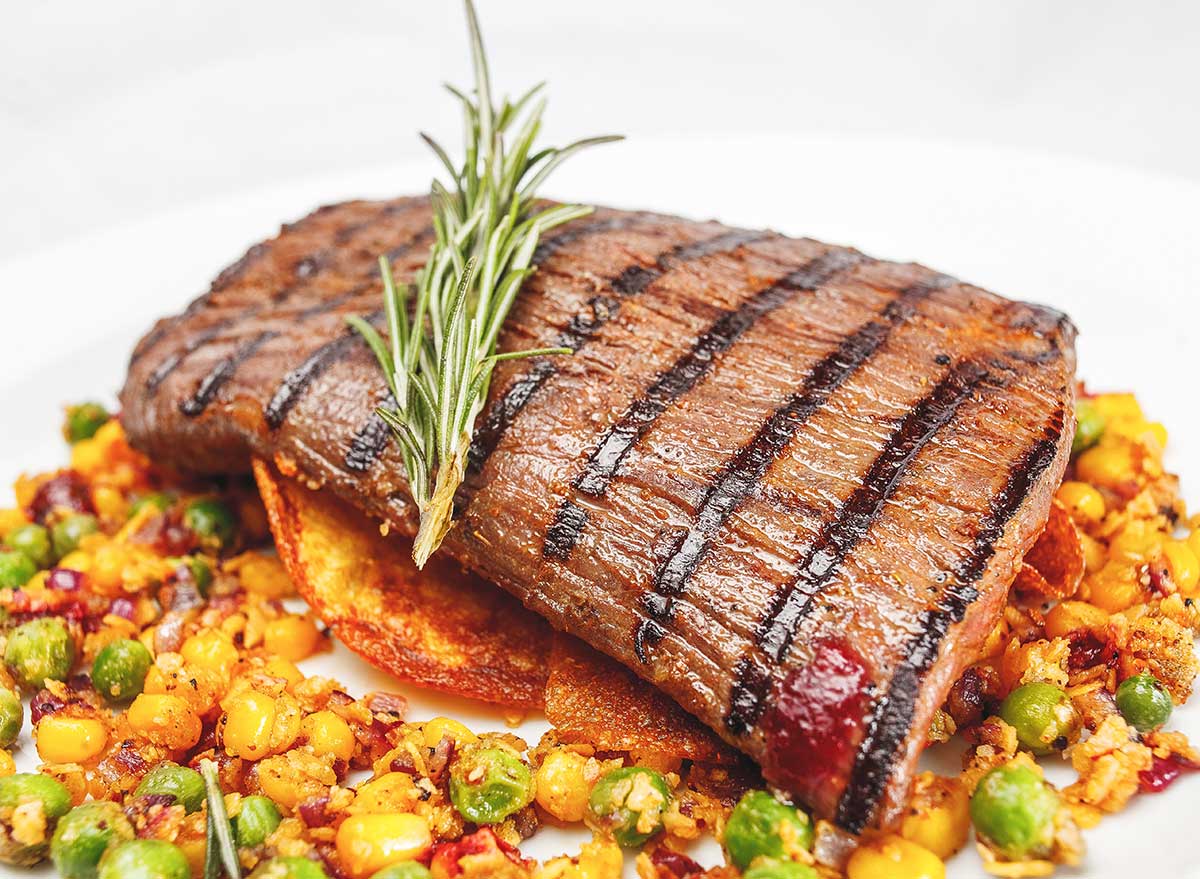
Protein, per 4 ounces: 24.7 grams
Lower in saturated fat than beef, this unique protein pick is best served medium rare. Try marinating for 12 to 24 hours, then grilling for about 6 minutes per side (or until the meat reaches an internal temperature of 145° F for medium rare).
7. Rabbit

Protein, per 4 ounces: 24.7 grams
Hop to it and pick up some of this lean protein on your next supermarket run. It works well slow roasted, pressure cooked or braised, since the meat can err on the tough side.
8. Ground bison
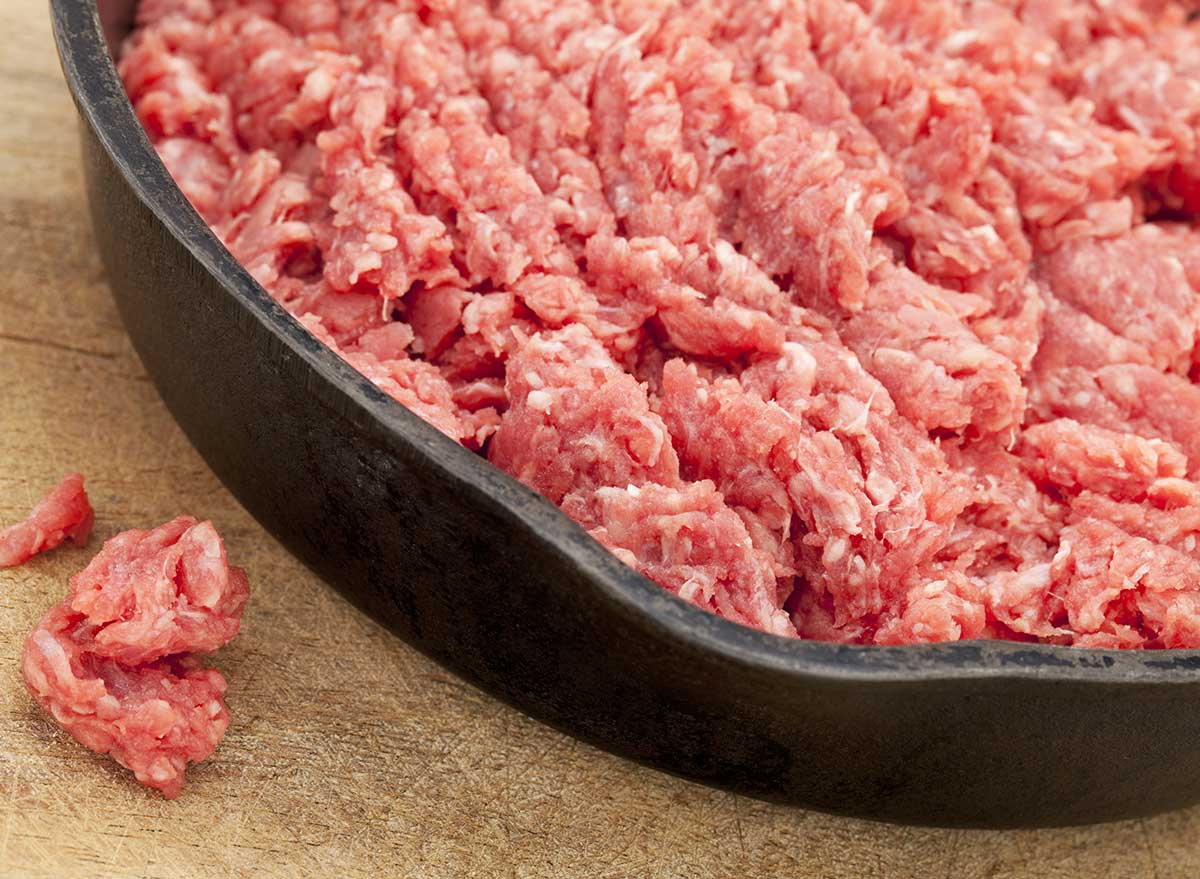
Protein, per 4 ounces: 24.5 grams
Found: An upgrade for your next burger night! Try bison instead of beef for a bit more protein, half the saturated fat, plus a hint more iron. Use it instead of beef in your favorite burger, meatloaf, or meatball recipe.
9. Venison steak
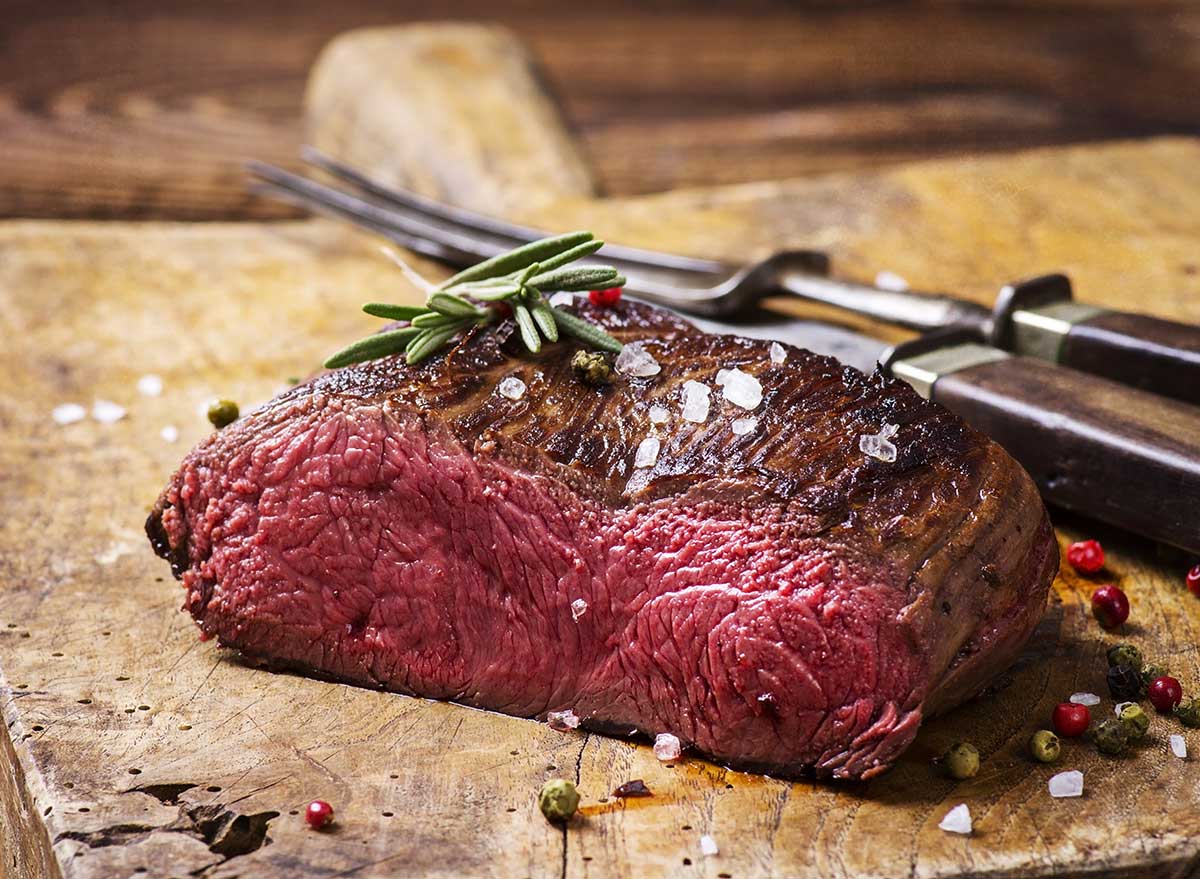
Protein, per 4 ounces: 24.3 grams
With nearly half (yes, really!) of the calories and one-fifth of the fat of beef, venison is among the leanest red meats around. (Psst…it can come from antelope or deer to quality as "venison.") With its low fat level, this red meat is best served grilled or seared. Cook to an internal temp of about 135° F.
10. Chicken breast
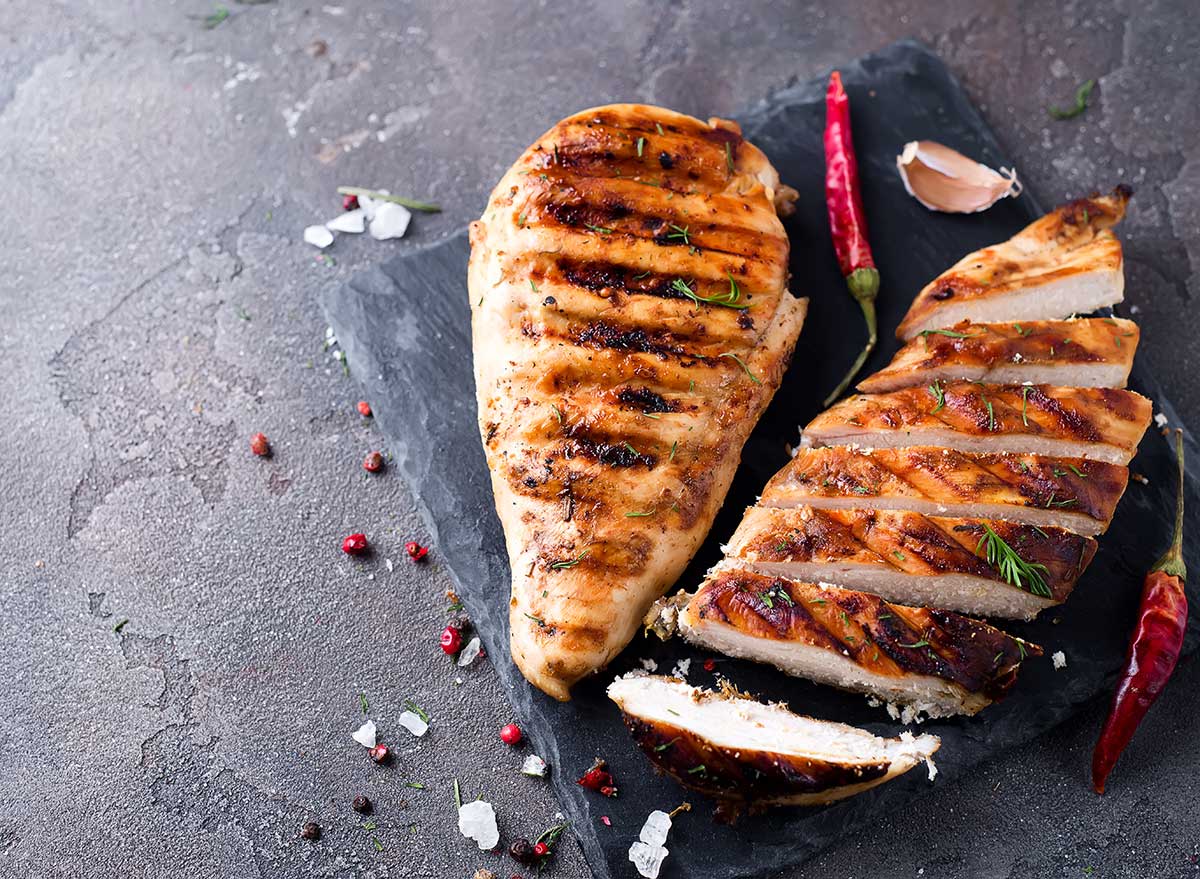
Protein, per 4 ounces: 23.6 grams
America's most-consumed protein source is among the highest in protein with just under 24 grams of protein in chicken per 4-ounce serving size. You know what to do: Simmer it in a slow cooker, grill it for sandwiches, or bake it for a super-simple sheet pan dinner.
11. Goat steak
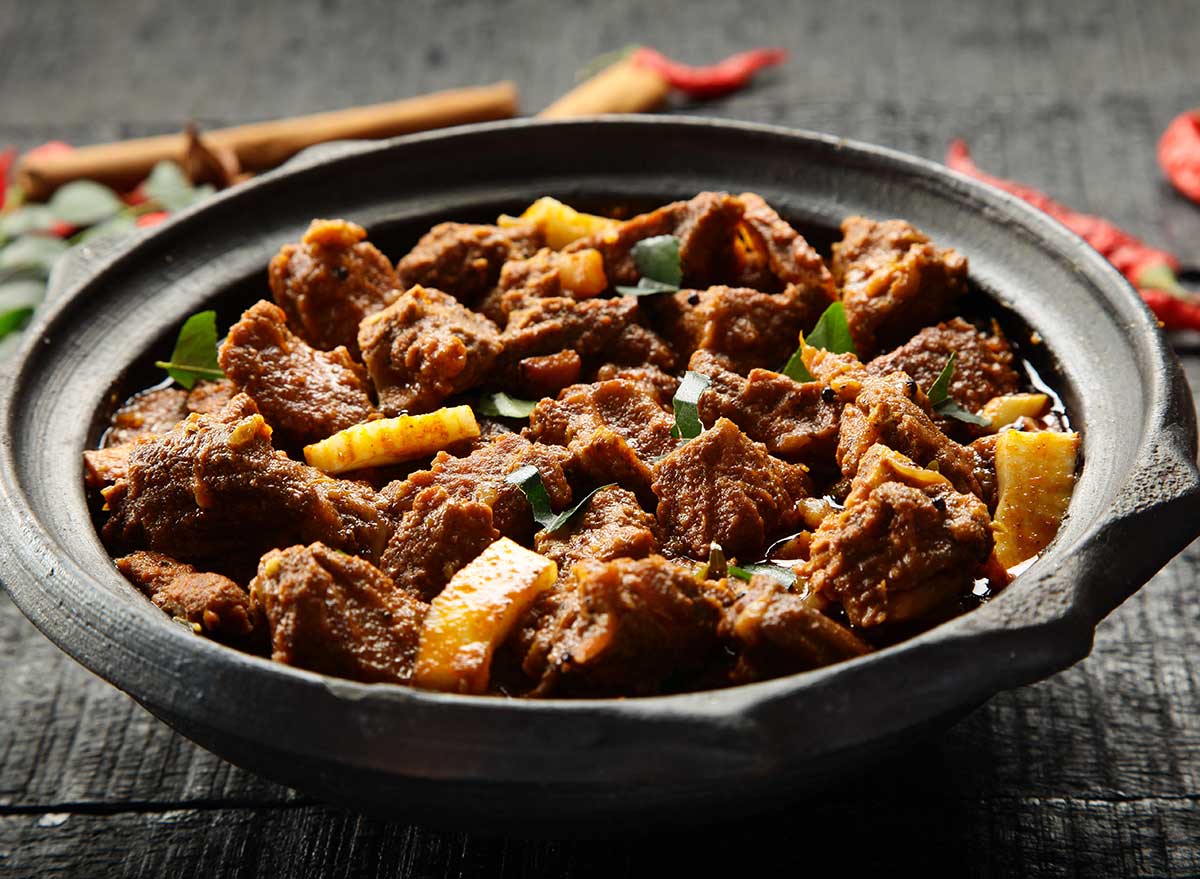
Protein, per 4 ounces: 23.4 grams
Searching for a unique source of high-quality protein? Goat's got you covered: It ranks among the highest-protein meats, and tastes similar to lamb. Grill to 145° F for the best, most succulent, results.
12. Beef liver
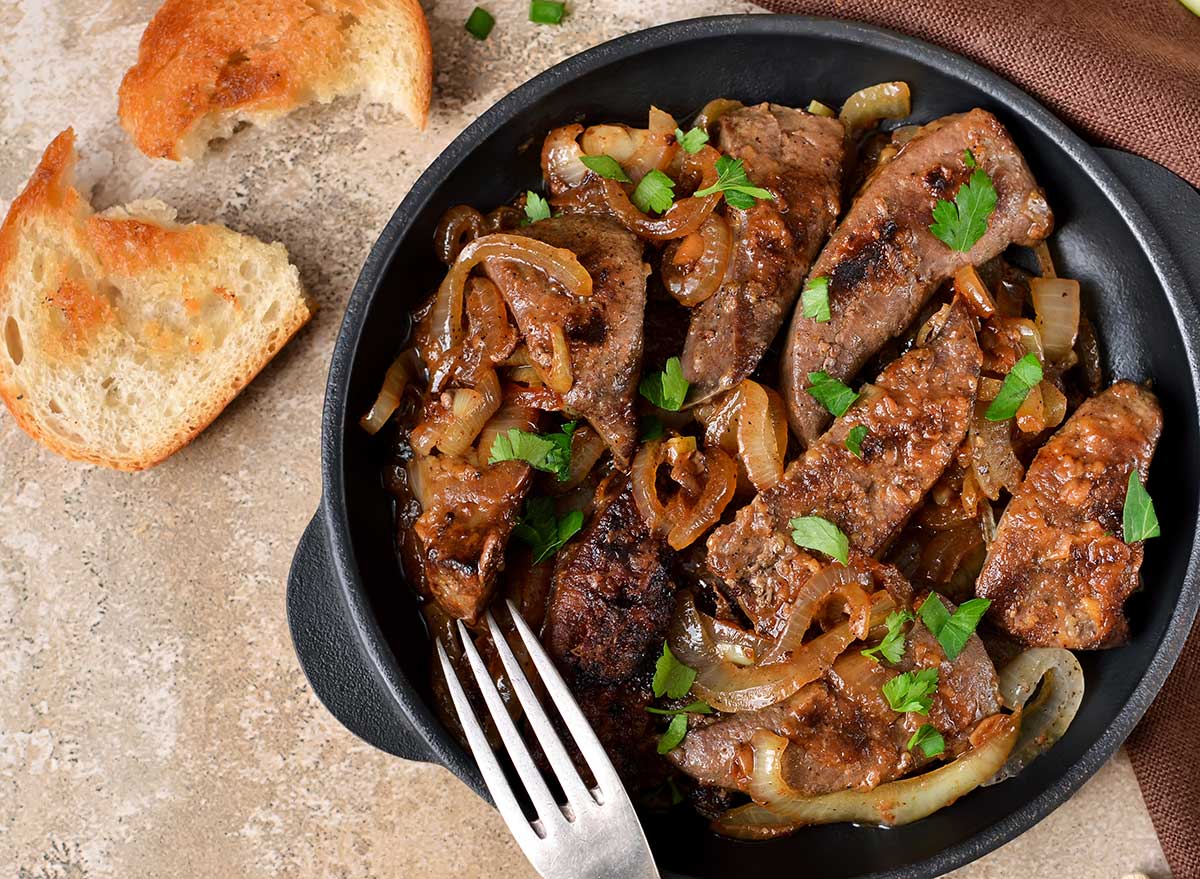
Protein, per 4 ounces: 23 grams
Grandma knew what she was doing when she recommended liver and onions. Beef liver is remarkably high in vitamin A, vitamin B12, and also offers a solid supply of protein. Rinse it well, soak it in milk in the fridge for 30 minutes, then sear in a pan of caramelized onions.
Source: https://www.eatthis.com/high-protein-lean-meat/
Postar um comentário for "Protein in 4 Oz Beef Burger"